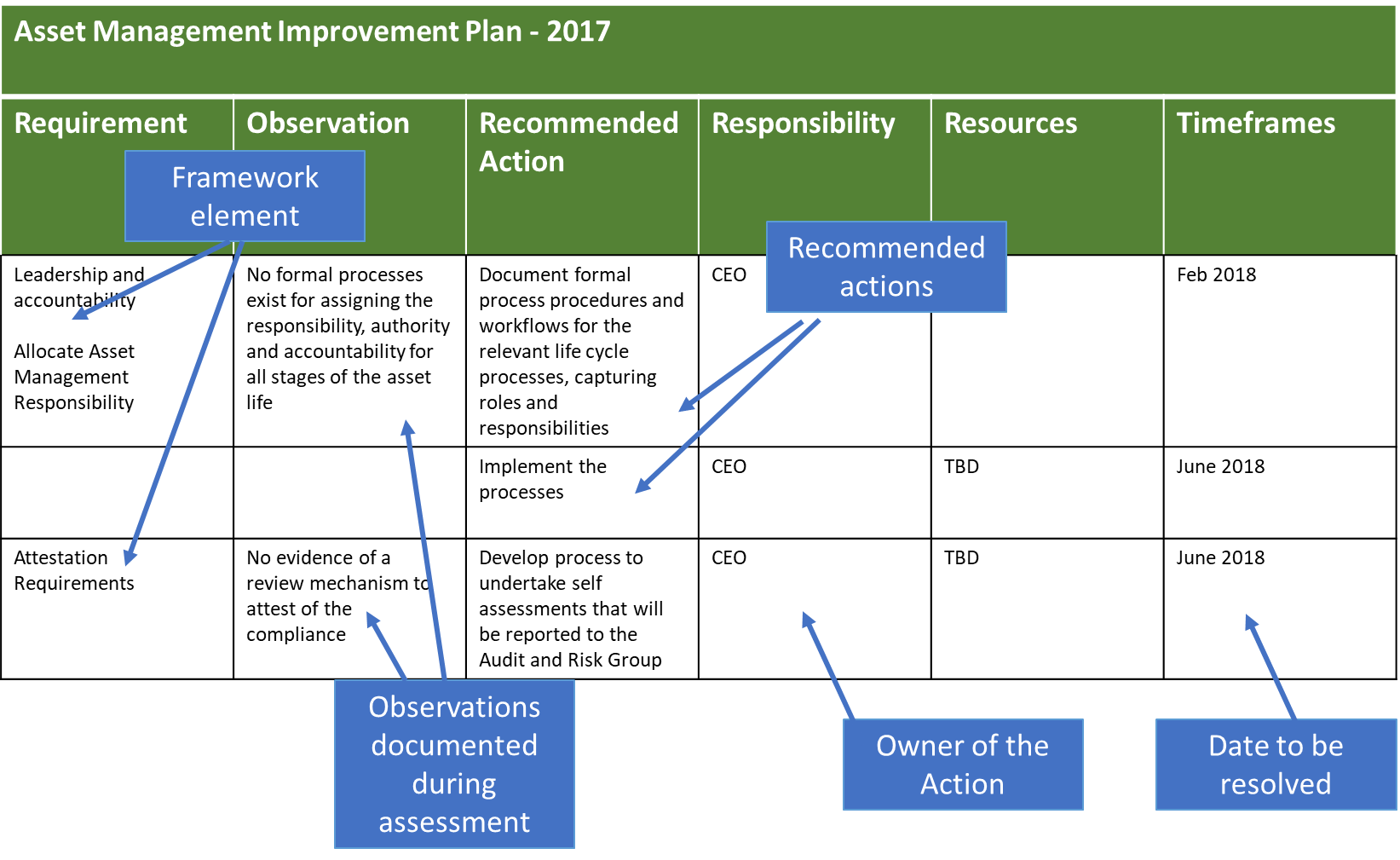What is the AMAF?
In February 2016, the Department of Treasury and Finance introduced the Asset Management Accountability Framework (AMAF), designed to assist Victorian Public Sector agencies manage their asset portfolios and provide better services for Victorians. From 1 July 2016, the requirement to comply with the AMAF was enforced by Standing Direction 4.2.3 ‘Asset Management Accountability’ under the Standing Directions of the Minister for Finance (2016). For FY16-17, agencies are required to assess their compliance with the AMAF and include a trial attestation in reporting with a progress update on actions to be taken to prepare for commencement of attestation from 1 July 2017, and from FY17-18 onwards an assessment of compliance as at 30 June and in the annual report, attest to compliance and disclose material compliance deficiencies.
The AMAF applies to an organisation’s assets as defined under the Australian Accounting Standards and asset thresholds established by each Accountable Officer. The AMAF is aligned to ISO 55000, the international standard for asset management but has some additional and different requirements to meet the specific needs of the Victorian Government.
Our approach
We are a member of the Endorsed Assessor Scheme (EAS) with the Institute of Asset Management (IAM) and are authorised to conduct assessments and issue certificates of compliance to the requirements of ISO 55001:2014, the international standard for asset management to which the AMAF is aligned. Our assessments are also conducted by consultants who are qualified as Certified Asset Management Assessors (CAMA) by the Asset Management Council (AMC) of Australia.
Our approach to providing our clients compliance assessment comprises of the three main steps as follows:
Step 1 – Determination of Current Compliance Level
We approach the assessment in manner that is consistent with the principles of ISO 19011:2011 Guidelines for auditing management systems:
- Ethical conduct – the foundation of professionalism;
- Fair presentation – the obligation to report truthfully and accurately
- Due professional care – the application of diligence and judgement in auditing
- Independent = the basis for the impartiality of the audit and objectivity of the audit conclusions and
- Evidence based approach – the rational method for reaching reliable and reproducible audit conclusions in a systematic audit process.
As the AMAF is aligned to ISO 55001, but has some additional different requirements to meet the specific needs of the Victorian Government, the approach we take to verify the level of compliance of the AMAF is no different to the approach we use for the ISO 55001 assessment. Consequently we use a modified version of the Institute of Asset Management (IAM) ISO 55001 assessment tool to not only make an assessment of the compliance to the mandatory requirements to the AMAF but also to provide an indication for the current level of maturity in reaching the required full compliance. The maturity assessment scores against each mandatory and guidance requirement is scored according to the following scale.

Step 2 – Development of an Asset Management Improvement Plan and Report
Following the assessment, an Asset Management Improvement Plan (AMIP) which documents the gaps and improvements identified during the gap assessment is developed in consultation with the organisation. This is followed by a report which shows the current assessment maturity and the improvement action plan.
Figure 2 below, is a snap shot of an Asset Management Improvement Plan.

Step 3: Provision of Compliance Assistance
Once the action plan has been reviewed and agreed with by the organisation, we will provide compliance assistance.
Depending on requirements, this Compliance Assistance can be either provided as an embedded resource to document all processes and procedures and to implement processes or on a part time basis to provide guidance and training and then to review of documents developed by the organisations resources.
For further details, read our article Asset Management Accountability Framework (AMAF) – an overview or contact us for any queries on how we may be of assistance to you.
